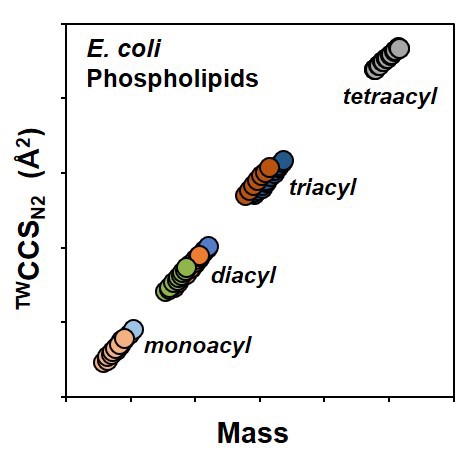Lipidomic consequences of phospholipid synthesis defects in Escherichia coli by HILIC-ion mobility-mass spectrometry

Lipidomic consequences of phospholipid synthesis defects in Escherichia coli by HILIC-ion mobility-mass spectrometry
Abstract
Our understanding of phospholipid biosynthesis in Gram-positive and Gram-negative bacteria is derived from the prototypical Gram-negative organism Escherichia coli. The inner and outer membranes of E. coli are largely composed of phosphatidylethanolamine (PE), minor amounts of phosphatidylglycerol (PG) and cardiolipin (CL). We report here the utility of hydrophilic interaction liquid chromatography (HILIC) paired with ion mobility-mass spectrometry (IM-MS) for the comprehensive analysis of the E. coli lipidome. Using strains with chromosomal deletions in the PG and CL synthesis genes pgsA and clsABC, respectively, we show that defective phospholipid biosynthesis in E. coli results in fatty-acid specific changes in select lipid classes and the presence of the minor triacylated phospholipids, acylphosphatidyl glycerol (acylPG) and N-acylphosphatidylethanolamine (N-acylPE). Notably, acylPGs were accumulated in the clsABC-KO strain, but were absent in other mutant strains. The separation of 1-lyso and 2-lyso-phosphatidylethanolamines (lysoPEs) is demonstrated in both the HILIC and IM dimensions. Using our previously validated calibration method, collision cross section values of nearly 200 phospholipids found in E. coli were determined on a traveling wave IM-MS platform, including newly reported values for cardiolipins, positional isomers of lysoPEs, acylPGs and N-acylPEs.